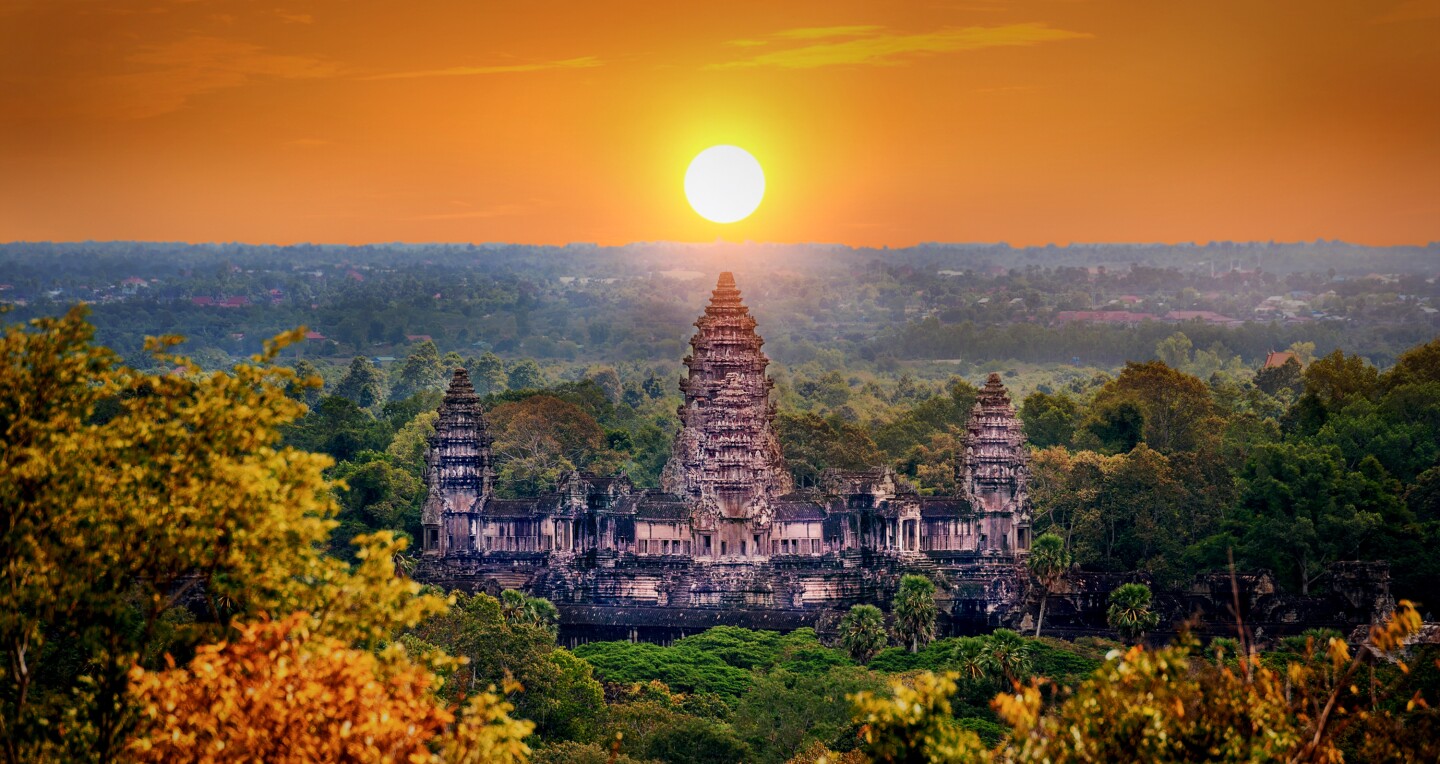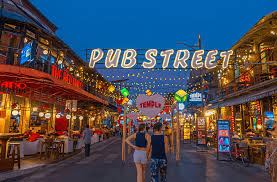



Siem Reap, a resort town in northwestern Cambodia, is the gateway to the ruins of Angkor, the seat of the Khmer kingdom from the 9th–15th centuries. Angkor’s vast complex of intricate stone buildings includes preserved Angkor Wat, the main temple, which is pictured on Cambodia’s flag. Giant, mysterious faces are carved into the Bayon Temple at Angkor Thom. ― Google
November to March: Cool, dry season — best weather for temple exploration and outdoor activities.
April to May: Very hot; fewer tourists.
June to October: Rainy season; lush scenery, fewer crowds.
By Air: Siem Reap–Angkor International Airport has direct flights from major Asian cities.
By Bus/Minivan: Connections from Phnom Penh, Battambang, and even Bangkok.
By Boat: Seasonal ferries from Phnom Penh via Tonlé Sap Lake (best during rainy season).
Angkor Wat: The world’s largest religious monument — a UNESCO World Heritage Site.
Bayon Temple: Known for its massive stone faces.
Ta Prohm: Jungle temple famous from Tomb Raider.
Angkor Thom: Ancient capital of the Khmer Empire.
Phare Circus: Cambodian performing arts with modern storytelling.
Tonlé Sap Lake: Floating villages and bird sanctuaries.
Angkor National Museum: Insight into Khmer history and religion.
Sunrise and sunset tours at Angkor Wat.
Explore temples by tuk-tuk, bike, or electric scooter.
Visit floating villages on Tonlé Sap.
Enjoy traditional Apsara dance performances.
Shop at Angkor Night Market or Old Market (Psar Chas).
Take a cooking class or pottery workshop.
Visit landmine museums or silk farms.
Budget: Hostels and guesthouses in the city center and near Pub Street.
Mid-range: Boutique hotels with pools and Cambodian-style decor.
Luxury: High-end resorts with spa services, often located a short drive from Angkor.
Local dishes: Fish amok, Khmer curry, lok lak, and nom banh chok.
Restaurants: Plenty of options around Pub Street and Wat Bo area — from street food to fine dining.
Cafés: Great for coffee, smoothies, and Western breakfasts.
Markets: Night markets and street stalls offer tasty, affordable eats.
Deeply rooted in Buddhism and Hinduism; temples reflect rich spiritual traditions.
Friendly, welcoming locals — often with a strong sense of national pride.
Traditional music, dance, and crafts still thrive, especially through cultural centers.
Respect temple etiquette: cover shoulders/knees, remove shoes when needed.